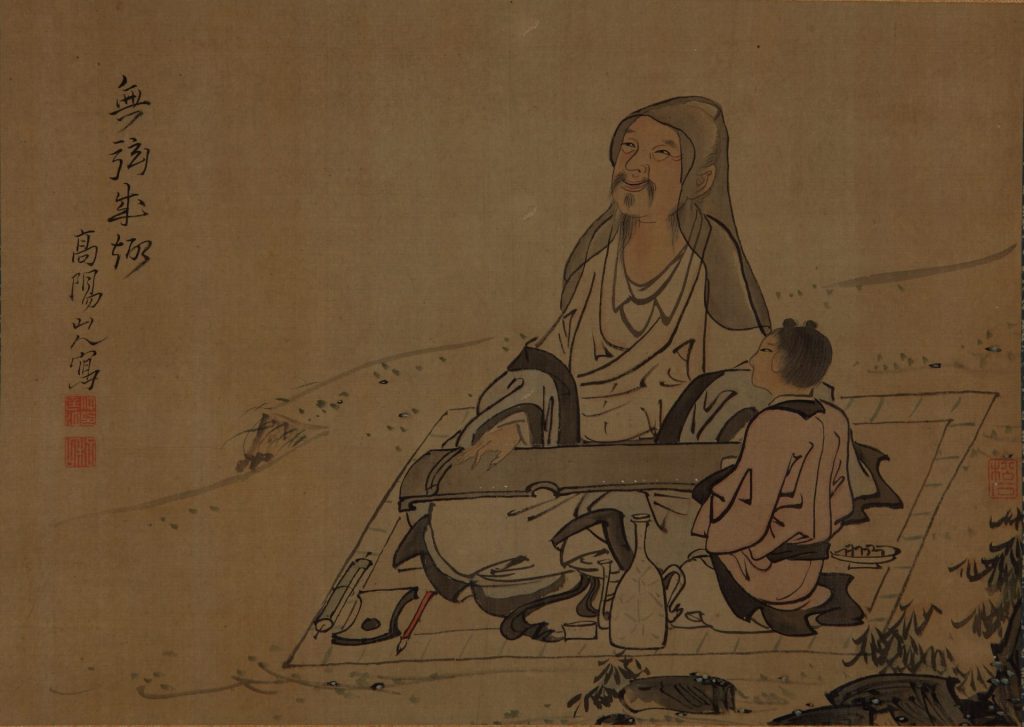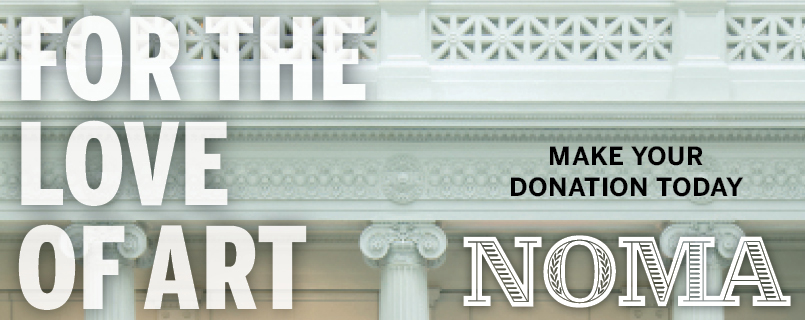
Nakayama Koyo (Japanese, 1717–80), Tao Yuanming and His Stringless Qin. Ink and color on silk. Gift of Dr. Kurt A. Gitter and Millie Hyman Gitter, 80.114.
Currently on view in the exhibition The Free Hermit Life: Images of Reclusion and Retirement in Japanese Edo-Period Painting is an enigmatic image: a seated man smiling beatifically, his fingers poised above a stringed instrument—one that has no strings.
The seated figure can be identified as that of the famed Chinese poet, Tao Yuanming (365–427). Tao lived during the Eastern Jin dynasty (266–420), a period of tremendous political and social disruption. When the Eastern Jin collapsed, Tao retired from government service, adopted the name Tao Qian (“Qian” meaning “hiding” or “reclusive”), and was thereafter known as “Recluse Tao.” Retirement (or reclusion) in Tao’s time did not refer to a solitary existence in a distant mountain dwelling entirely removed from others. Rather, like Thoreau’s temporary abode at Walden Pond, Tao’s hermitage was within easy distance of the city; he was able to receive guests and visit friends, and engage fully in intellectual pursuits, as well as tending to his beloved chrysanthemums.
To the left of the figure, the artist Nakayama Koyo has written: Without strings [it] becomes interesting. This inscription refers to one of Tao’s most famous works, Poem on the Stringless Qin, from which only a fragment survives: If one knows the inner significance of the qin; Why make the effort to put on strings and pluck them? A seven-stringed instrument of great antiquity, the qin was long associated with the Chinese literati, or educated elite.
The subject of this work illuminates not only the deep, philosophical connection between a musician and his instrument, it also celebrates the shedding of official responsibilities and the freedom of retirement for its subject and the resonance of that theme across time and geography. Edo Japan (1615–1868) was a rigidly stratified society, where one’s role was predetermined, and one’s movements were both limited and regulated. Unsurprisingly, the longing to escape the tensions of living in such an environment manifested itself in visual art as well as in literature, poetry, drama, and music. Painters, particularly those like Koyo, who were affiliated with the Chinese-inspired school of painting known as Nanga, found parallels for their situation in the Chinese traditions of centuries before. When looking at this scroll, patrons and viewers alike could experience momentary, vicarious relief from their constrained circumstances.
—Lisa Rotondo-McCord, Deputy Director for Curatorial Affairs/Curator of Asian Art
NOMA is committed to uniting, inspiring, and engaging diverse communities and cultures through the arts—now more than ever. Your gift makes a direct and immediate impact as we plan exciting new exhibitions, organize insightful programs in the museum and Besthoff Sculpture Garden, and develop new ways for you to #ExploreNOMA.
